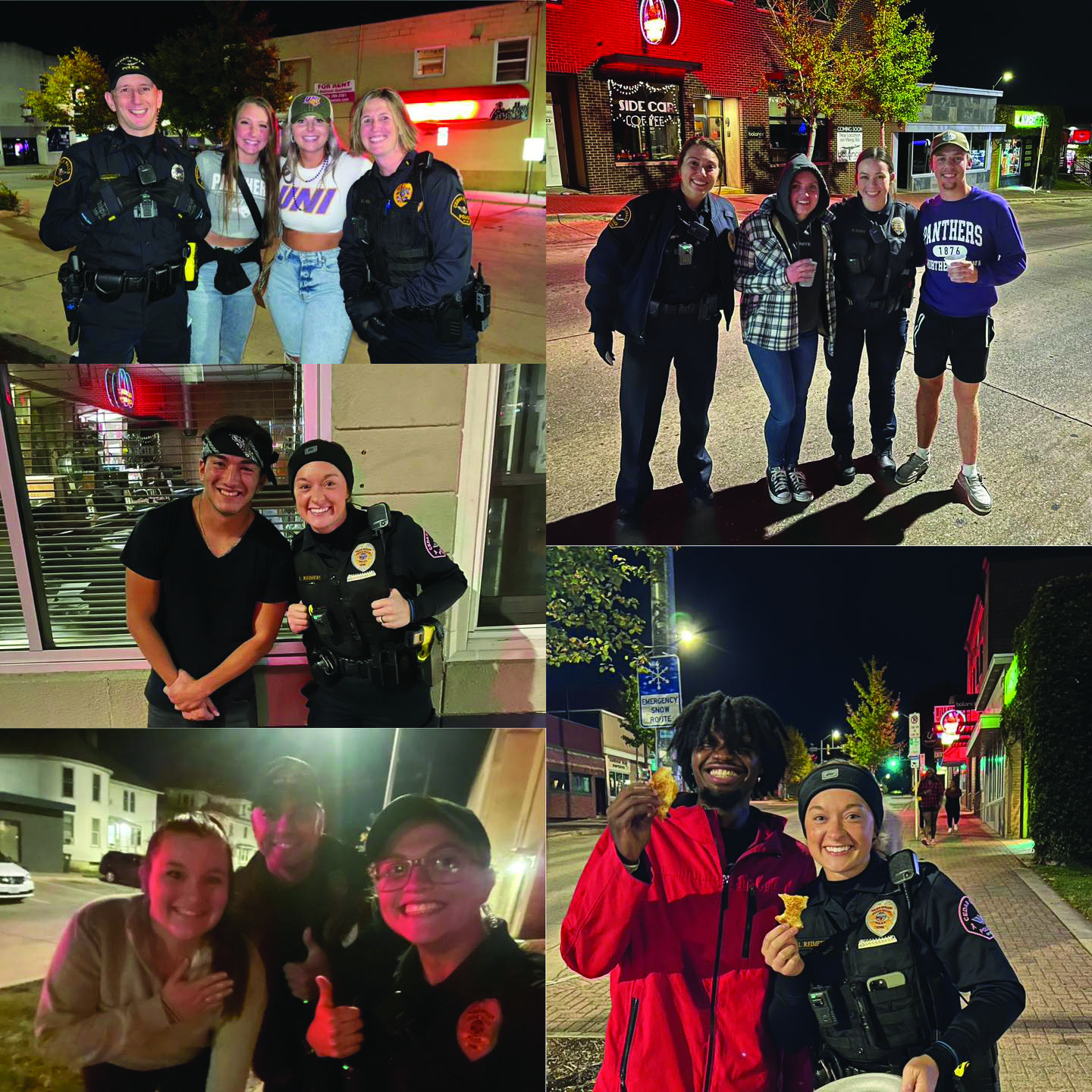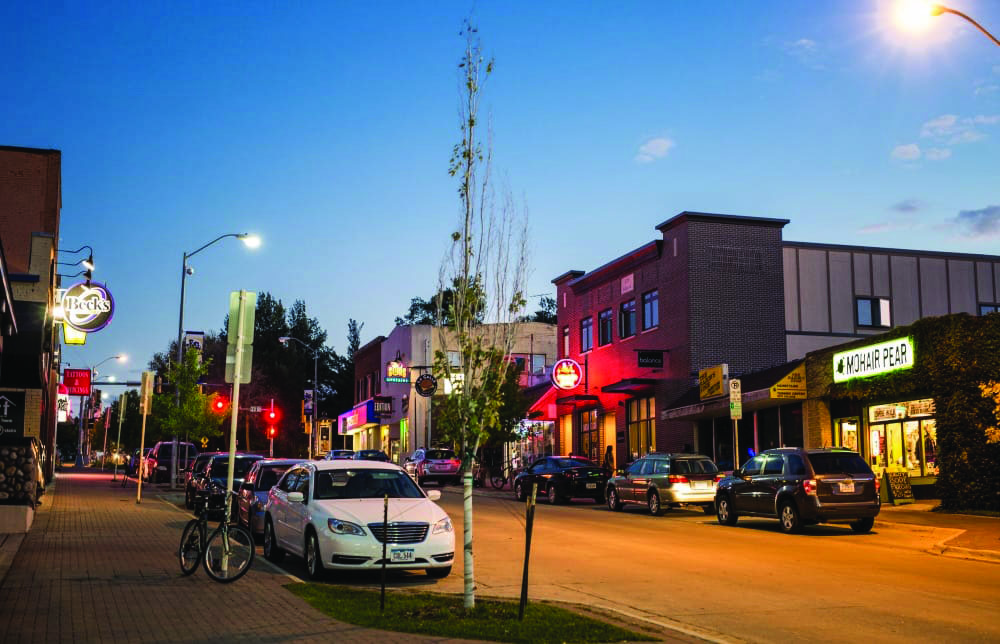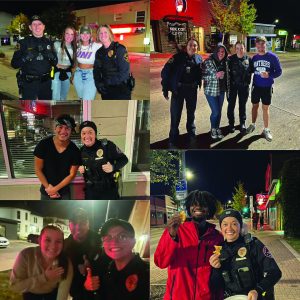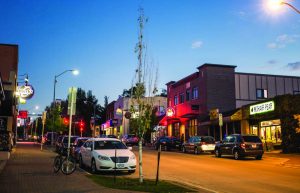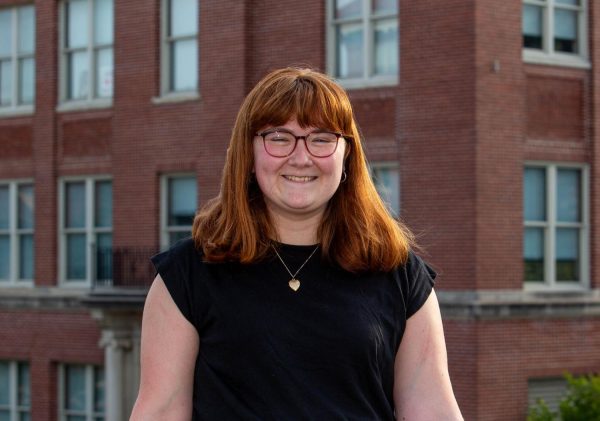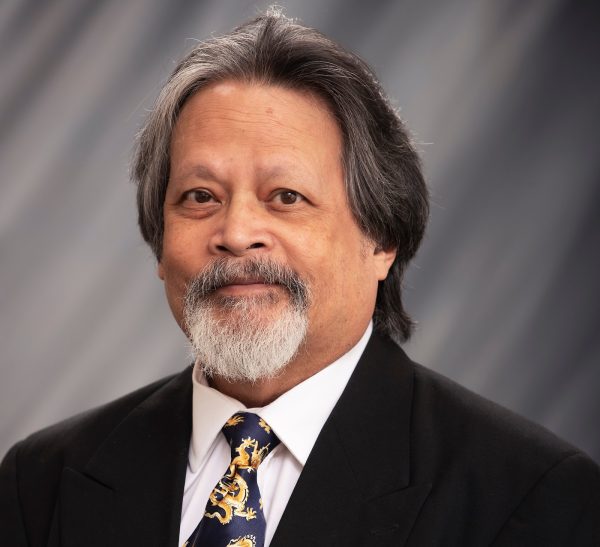Then and now: HOCO on the Hill
Oct 12, 2022
College Street by the Hill open to traffic on Friday of Homecoming weekend for first time since 1996 riots
For the first time since the riots of 1996, the 2200 block of College Street, known as the Hill, remained open to vehicle traffic on the Friday of Homecoming week.
As Acting Chief of Police for the Cedar Falls Police Department Mark Howard said, the department didn’t see a need for the street to be closed this year.
“This year we agreed to not close it on Friday night for the reason that we just didn’t think we were going to have the crowd, and we didn’t,” he said. “Friday nights tend to be real slow, this year was really slow. As a matter of fact, [last] Friday night was slower than most normal Friday nights,” he said.
According to Howard, the size of the crowds on the Hill has significantly decreased since the 90s. “Saturday nights are still busy, but we don’t tend to see the large crowds that we saw years ago,” he said.
College Street was still closed off on Saturday night due to the expected larger crowd compared to Friday. However, the street closed at 9 p.m. rather than 8 p.m. as in years past.
The decrease in police involvement on the Hill is a sign of times, as 26 years earlier, Homecoming weekend was anything but “slow.”
The events the night of Saturday, Oct. 12, 1996, following UNI’s Homecoming football game have come to be known as the “riots of ‘96.” After an evening of raucous celebrations, the 2200 block of College Street was closed to through traffic around 11:30 p.m., and businesses on the Hill were ordered by Cedar Falls Public Safety to stop serving alcohol and shut down around 12:15 a.m.
The enormous crowd, expelled from the bars, proceeded to become unruly, overturning vehicles and smashing the windows of a Kum & Go. Over 24 individuals, most of whom were under the age of 21, were arrested that night.
After the riots of ‘96, Howard said, the street had been closed every Friday and Saturday of Homecoming weekend until this year. In the early 2000s, the police also tried placing barriers surrounding the edge of the road so no pedestrians were allowed in the middle of the street as a form of crowd control.
He continued, saying that some of the specific issues that contributed to the riots of ‘96 are no longer present. For many years, pedestrian safety has been the main motivation behind closing the street.
“The years I was in charge of Homecoming as the night shift commander, I liked it closed down because I just didn’t want to see anybody get hit,” he said. “The more traffic we have going up and down that road, the more dangerous it is, so we’ve always closed it.”
Alongside keeping the street open, Howard said the department also had more officers in vehicles this year rather than walking around.
“We’re trying to be more mobile as was the wish of some of the business owners, and we’re trying to be in better partnership with some of the business owners,” he said.
When asked why the crowd sizes on the Hill have decreased, Howard cited a shift in culture.
“Your [age] group tends to entertain themselves more at home,” he said. “Whether it be video games or social media, electronics plays a big part in why we don’t see the big crowds anymore.
Aside from the Hill, Howard said that the Cedar Falls Police Department has also seen fewer large house parties in recent years, likely due to the City of Cedar Falls placing increased code restrictions on landlords relating to noise violations.
Howard added that the amount of activity on the Hill has leveled out for the most part, and they’ve seen about the same sized crowds for the past few years. He predicts that the police presence on the Hill will continue to change over the next year as they continue to adjust to the smaller crowds. However, they will continue to monitor the area closely.
“Our big fear is if something does happen, and we’re not ready,” Howard said. “We’ve always got to be a little bit proactive and make sure we have the things in place to respond if something does happen and to get ahead of it, but we just aren’t seeing near the crowds we used to see.”
While the activity on the Hill isn’t what it used to be, Howard is optimistic that the high spirits and energizing atmosphere that characterize the area may regain their strength–safely.
“I think the [College Hill] Partnership is working desperately to rebuild some of that culture on the Hill, and I support that,” he said. “I was a UNI student and I can tell you, in the early ‘90s, we lived up here. We had a great time up here, and I’d love to see that come back.”
The relationship between the student community and the Cedar Falls Police Department has also greatly changed since the riots of ‘96.
“The student culture has changed. There’s a lot of respect students give us to where we trust them,” Howard said.
According to Howard, over 65 percent of the Cedar Falls officers have four-year degrees, many of whom attended UNI.
“We have UNI students that work for us,” Howard continued. “I have several officers who are still in school at UNI, so we’re a young force that understands the younger culture, and many of us are still part of it,”
Howard reminded the community that at the end of the day, the police have one priority: safety.
“Enforcement is part of it… but really our proactiveness is to provide safety for the students who choose to go have fun on those nights,” he said. “When you see that large amount of police out that night, it’s just because we want everyone to be safe.”

